Search Result
Results for "
molecular probe
" in MedChemExpress (MCE) Product Catalog:
1
Biochemical Assay Reagents
1
Isotope-Labeled Compounds
| Cat. No. |
Product Name |
Target |
Research Areas |
Chemical Structure |
-
- HY-101839
-
|
VU0488130
|
mAChR
|
Neurological Disease
|
|
ML381 (VU0488130) is a highly selective, central nervous system penetrant mAChR M5 orthogonal antagonist (IC50 = 450 nM; Ki = 340 nM). ML381 is unstable in rat plasma and can be mainly used as a molecular probe for in vitro and electrophysiological studies .
|
-
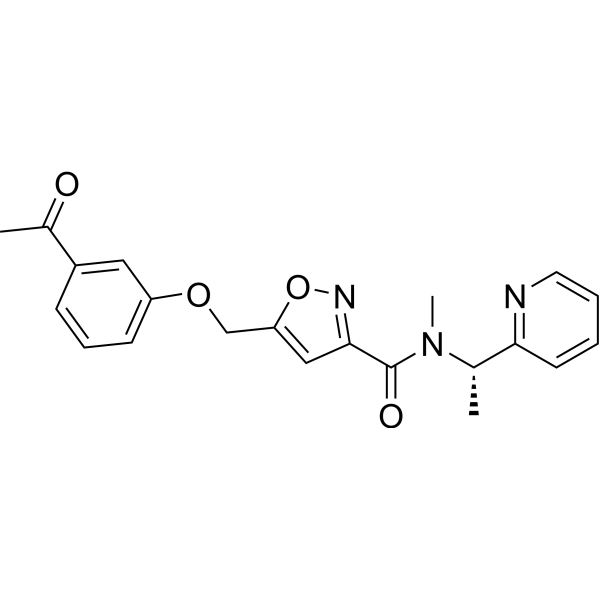
-
- HY-P4138
-
|
|
Fluorescent Dye
|
Cancer
|
|
Antennapedia Peptide FAM-labeled is a fluorophore labeled peptide. Antennapedia Peptide FAM-labeled also can be used for the research of cancer as a molecular probe .
|
-

-
- HY-D1045A
-
|
DABCYL sodium; Para-methyl red sodium
|
Fluorescent Dye
|
Others
|
|
Dabcyl acid sodium (DABCYL sodium) is a nonfluorescent chromophore and a quencher. Dabcyl acid sodium can be used as molecular beacon nucleic acid probes to recognize and report the presence of specific nucleic acids in homogeneous solutions .
|
-
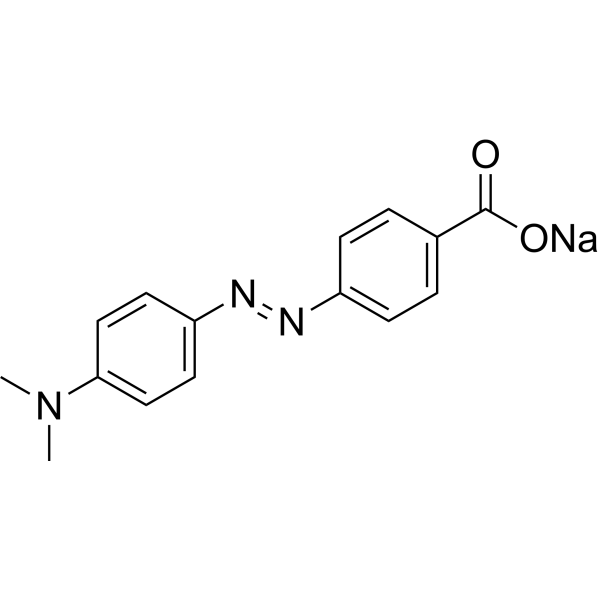
-
- HY-D1609
-
|
|
Fluorescent Dye
|
Others
|
|
BODIPY FL Verapamil hydrochloride is a fluorescent dye, it can be used as a molecular probe to label tissues and cells. BODIPY FL Verapamil hydrochloride is a substrate for both ABCB1 and ABCC1 .
|
-

-
- HY-162051
-
|
|
Cytochrome P450
|
Cancer
|
|
CYP1B1-IN-6 (compound 19) is a fluorescence molecular probes which inhibits CYP1B1 activity. CYP1B1-IN-6 can identify tumor sites in fluorescence imaging and photoacoustic imaging modes .
|
-
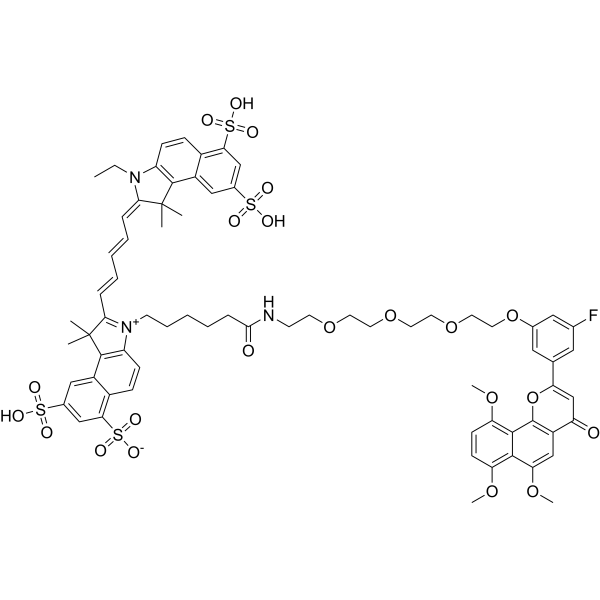
-
- HY-D1289
-
-
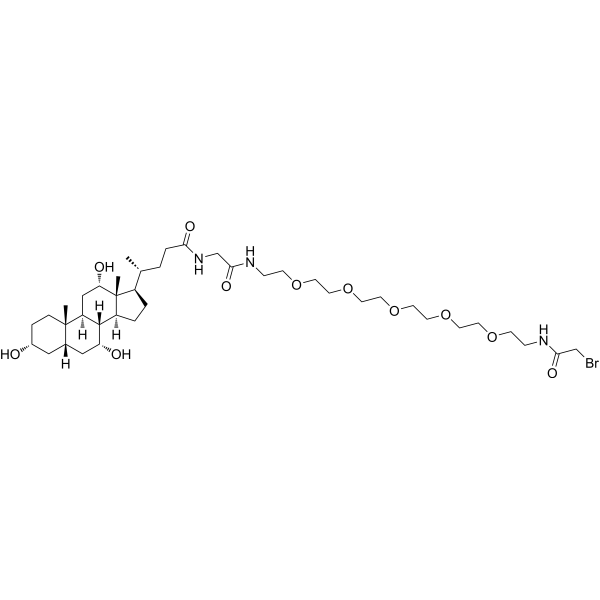
-
- HY-Y1309
-
|
Furro ER; NSC 9586; Nako TRB
|
Endogenous Metabolite
|
Others
|
|
1-naphthol is an excited state proton transfer (ESPT) fluorescent molecular probe.
|
-
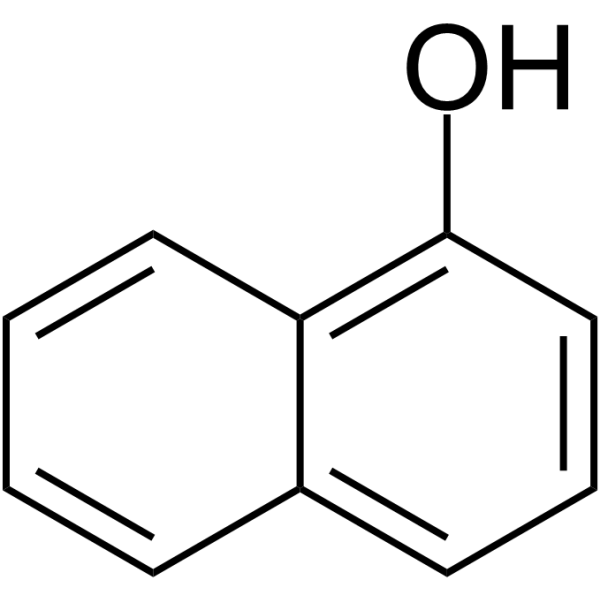
-
- HY-Y1309S
-
|
Furro ER-d8; NSC 9586-d8; Nako TRB-d8
|
Endogenous Metabolite
|
Others
|
|
1-Naphthol-d8 is the deuterium labeled 1-Naphthol[1]. 1-naphthol is an excited state proton transfer (ESPT) fluorescent molecular probe[2].
|
-

-
- HY-111152
-
|
|
STAT
|
Cancer
|
|
ML115 is a molecular probe of the signal transducer and activator of transcription (STAT3). ML115 is a STAT3 agonist .
|
-
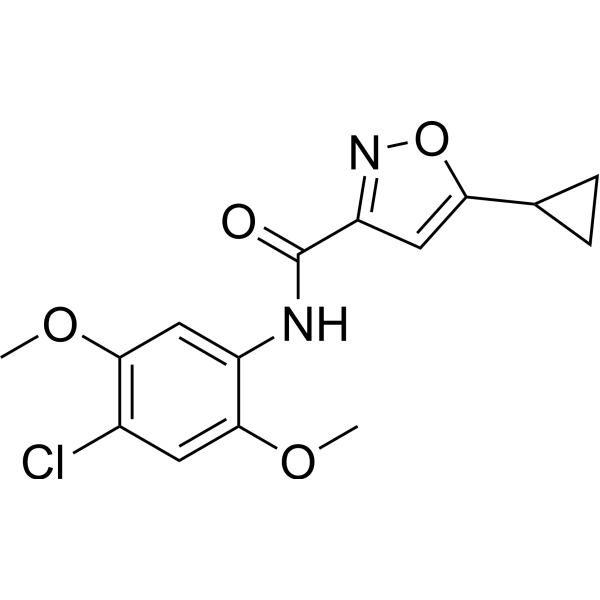
-
- HY-D0039
-
|
|
Fluorescent Dye
|
Others
|
|
3-Cyanoumbelliferone is a coumarin derivative, acting as molecular probe and fluorescent dye. 3-Cyanoumbelliferone is also a macrophage migration inhibitory factor (MIF) tautomerase inhibitor with a Ki of 2.9 μM .
|
-
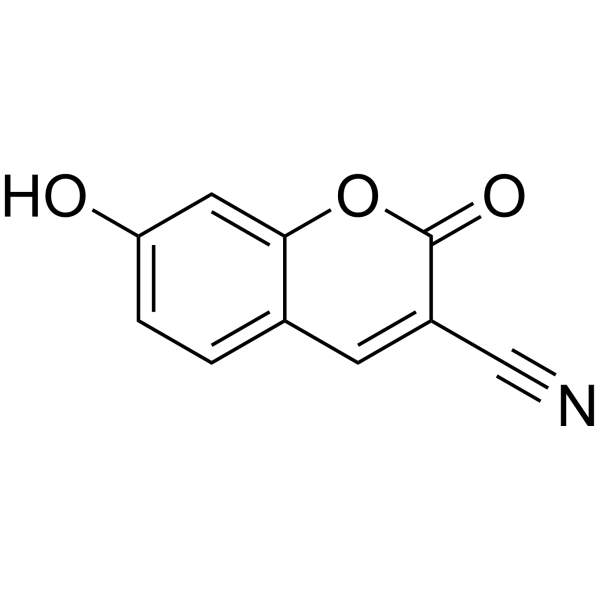
-
- HY-116070
-
|
4-Iodoantipyrine
|
Others
|
Infection
|
|
Iodoantipyrine (4-Iodoantipyrine) is an iodinated Antipyrine (HY-B0171) with potential antiviral activity. Antipyrine (Phenazone) is an antipyretic and analgesic that also serves as a molecular probe of hepatic oxidative metabolites .
|
-
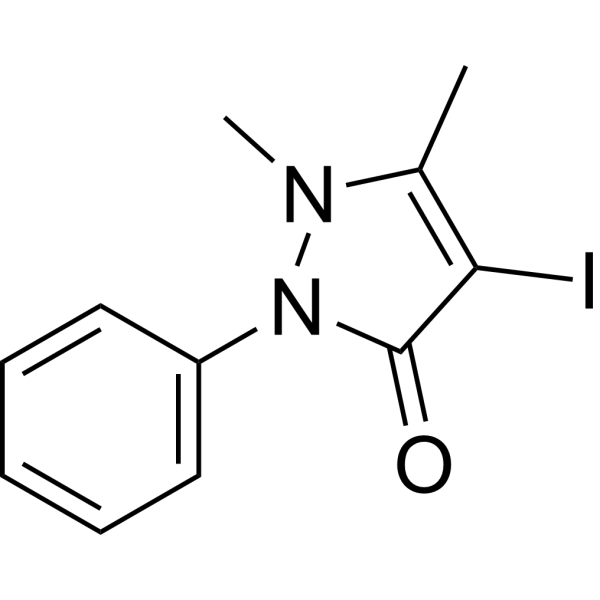
-
- HY-149836
-
|
|
Fluorescent Dye
|
Others
|
|
3-MeOARh-NTR is an activatable imaging probe with high selectivity, and good stability. 3-MeOARh-NTR possesses high selectivity and high signal-to-noise ratio for nitroreductase (NTR) detection, and serves as an efficient molecular tool for endogenous NTR detection .
|
-
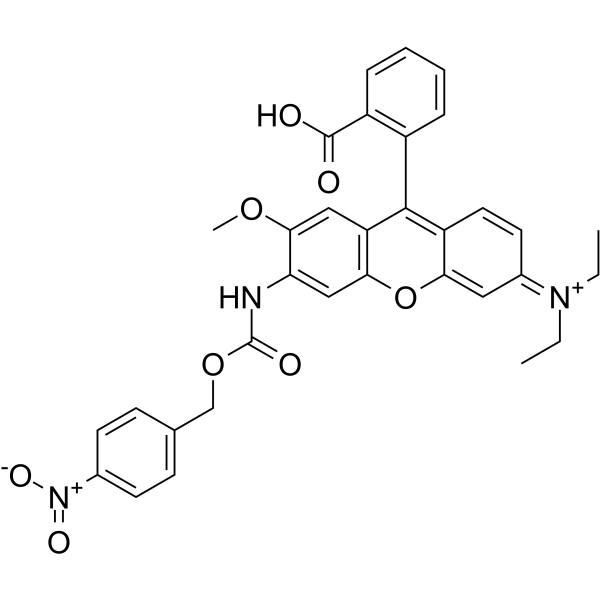
-
- HY-149836A
-
|
|
Fluorescent Dye
|
Others
|
|
3-MeOARh-NTR chloride is an activatable imaging probe with high selectivity, and good stability. 3-MeOARh-NTR chloride possesses high selectivity and high signal-to-noise ratio for nitroreductase (NTR) detection, and serves as an efficient molecular tool for endogenous NTR detection .
|
-
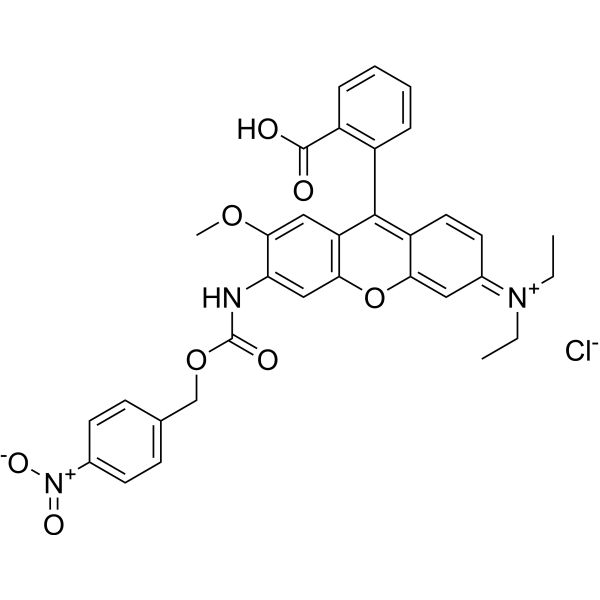
-
- HY-12412
-
|
NCGC-00183434
|
Caspase
|
Inflammation/Immunology
Cancer
|
|
ML132 (NCGC-00183434) is a selective caspase 1 inhibitor with an IC50 of 34.9 nM. ML132 shows good stability that can be utilized as molecular probes of caspase 1. ML132 can be used for research in the field of anti-cancer and anti-inflammatory .
|
-
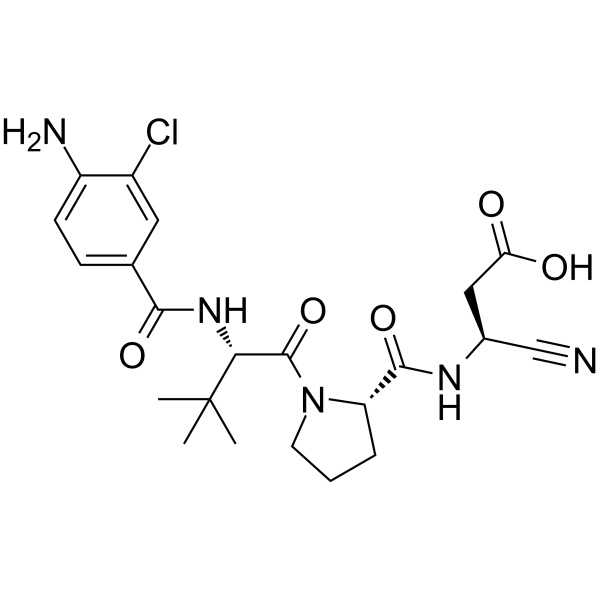
-
- HY-148864A
-
|
|
Epigenetic Reader Domain
|
Cancer
|
|
JQ1-TCO (JQ1-trans-cyclooctene) is a derivative of JQ1 (HY-13030), an inhibitor of BET. JQ1-TCO is suitable for click chemistry and can be used as molecular probes in vitro and in vivo .
|
-
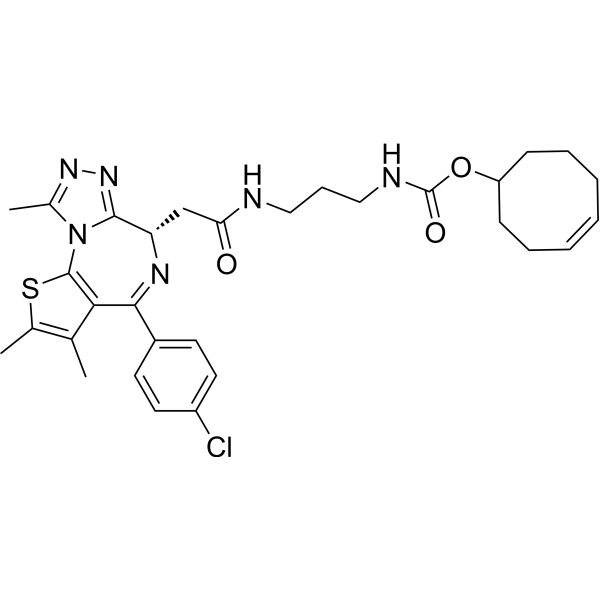
-
- HY-160059
-
|
|
Others
|
Cancer
|
|
JHIT2e aptamer sodium is a molecular probe based on the aptamer JHIT2 of human liver cancer cell line HepG2 cells. JHIT2e aptamer sodiu retains the ability to specifically bind HepG2 and can deliver fluorescent materials or radionuclides to tumors .
|
-
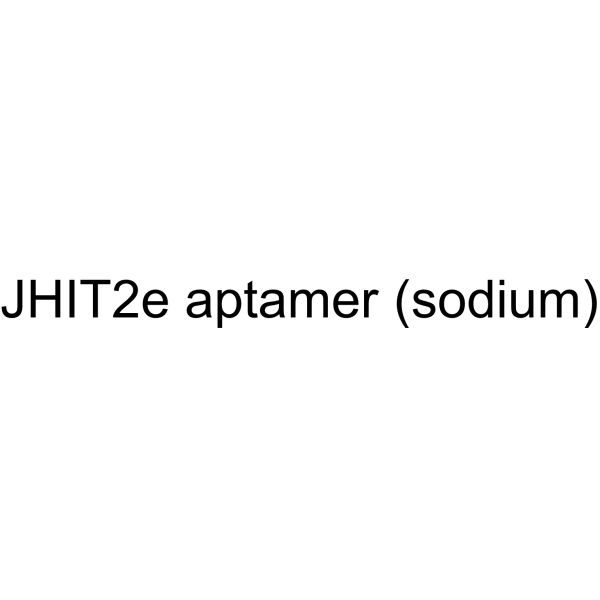
-
- HY-160063
-
|
|
Others
|
Cancer
|
|
SW1 aptamer sodium is a high-affinity DNA aptamer (Kd: 123.62 nM) that targets liver cancer SMMC-7721 cells and targets intracellular components within the nucleus. SW1 aptamer sodium can also identify various other types of cancer cells and tissues, serving as an effective molecular probe for clinical cancer diagnosis .
|
-
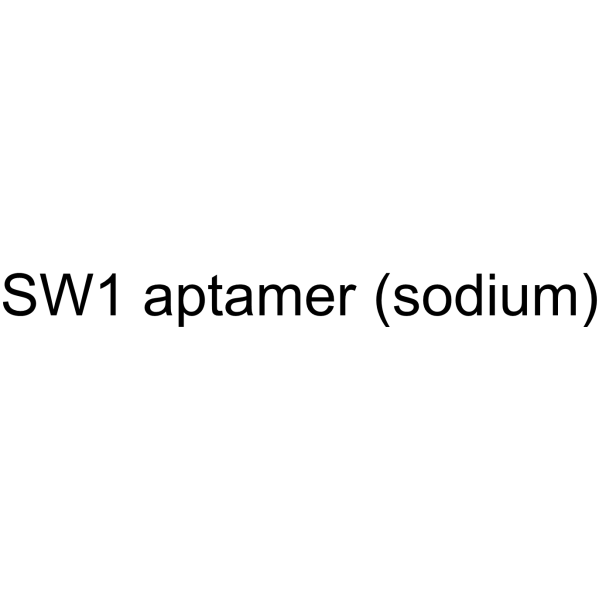
-
- HY-130022
-
|
|
Fluorescent Dye
|
Others
|
|
HKPerox-1 is a highly sensitive green fluorescent probe for the specific detection of H2O2 in living cells with a maximum excitation wavelength and emission wavelength of 520 nm and 543 nm, respectively .
|
-

-
- HY-D1719A
-
|
|
Fluorescent Dye
|
Cancer
|
|
Cypate is a near-infrared fluorescent dye that belongs to the family of photosensitizers. Cypate has high photostability and optical properties, and is often used in near-infrared optical imaging, as well as optical imaging, tumor marking, and drug delivery. In addition, Cypate is also used as a molecular probe and combined with targeting molecules (such as CBT or small interfering RNA) to achieve efficient detection and imaging of specific cells or tissues .
|
-
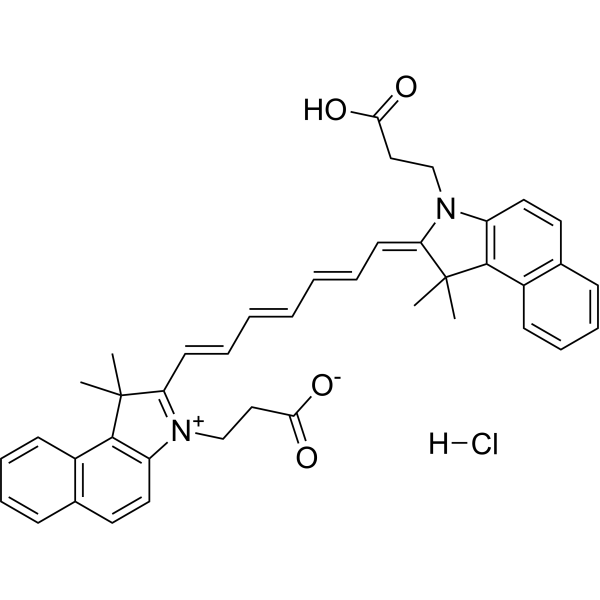
-
- HY-148864
-
|
|
Epigenetic Reader Domain
|
Cancer
|
|
JQ1-TCO is the double bond E configuration of JQ1-TCO (HY-148864A). JQ1-TCO (JQ1-trans-cyclooctene) is a derivative of JQ1 (HY-13030), an inhibitor of BET. JQ1-TCO is suitable for click chemistry and can be used as molecular probes in vitro and in vivo .
|
-
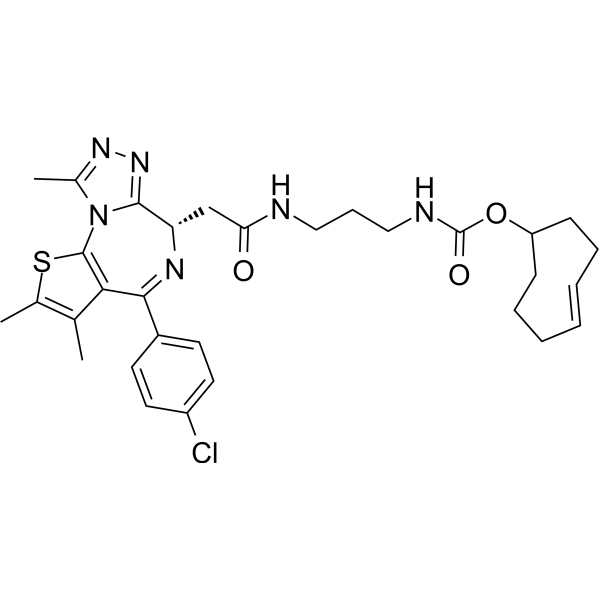
-
- HY-W090065
-
|
1-Pyrenemethylamine hydrochloride
|
Biochemical Assay Reagents
|
Others
|
|
Pyren-1-ylmethanamine hydrochloride, Pyren-1-ylmethanamine hydrochloride is commonly used as a fluorescent probe in biochemistry and molecular biology to detect and study nucleic acids, proteins and other biomolecules, moreover, it has been used in analytical chemistry Among them, for the detection of heavy metals and other pollutants in environmental samples, the pyrene group in the molecule exhibits strong fluorescence properties, which makes it useful as a sensitive and selective detector in various applications.
|
-

-
- HY-136379
-
|
Cdc42-IN-1
|
Ras
|
Cancer
|
|
CID44216842 (Cdc42-IN-1) is a potent Cdc42-selective guanine nucleotide binding lead inhibitor. The EC50s for Cdc42 WT and Cdc42Q61L mutant are 1.0 and 1.2 μM in GTP binding assay, respectively. The EC50s for Cdc42 WT and Cdc42Q61L mutant are 0.3 and 0.5 μM in GDP binding assay, respectively. Use as a molecular probe .
|
-

-
- HY-155412
-
|
|
Biochemical Assay Reagents
|
Others
|
|
PFI-6 is a non-cytotoxic and selective MLLT1/3 probe targeting the YEATS domain of MLLT1 (ENL/YEATS1) and MLLT3 (AF9/YEATS3). PFI-6 shows IC50 values of 140 nM and 160 nM for MLLT1 and MLLT3, respectively. PFI-6 can serve as a molecular tool to explore the role of MLLT1/3 in various diseases and related genome validation studies .
|
-
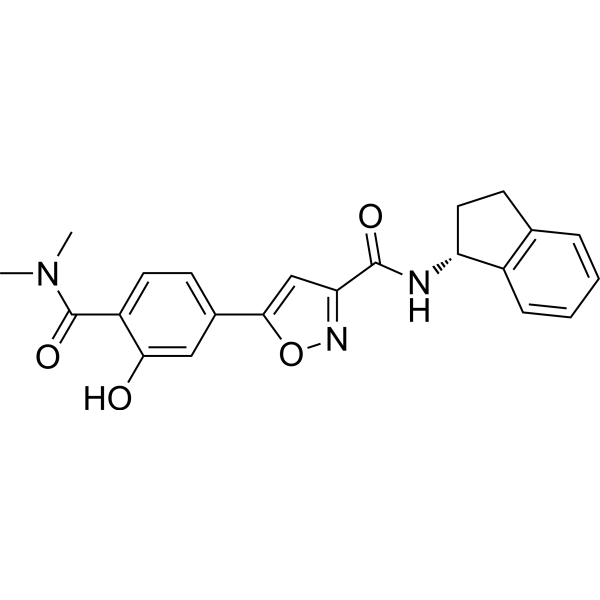
-
- HY-103609
-
|
Benzo[def]phenanthrene
|
Biochemical Assay Reagents
|
Others
|
|
Pyrene is a polycyclic aromatic hydrocarbon (PAH) composed of four fused benzene rings. It has a distinct aromatic odor, produced by incomplete combustion of organic matter. Pyrene exhibits strong fluorescence, emitting in the blue region of the spectrum, making it useful as a probe for studying molecular interactions in solution and on surfaces. Pyrene is also used as a model compound for the study of PAHs in various environments and biological systems because of its ubiquity in these environments. However, long-term exposure to pyrene has been associated with potential health risks, including carcinogenicity and mutagenicity.
|
-
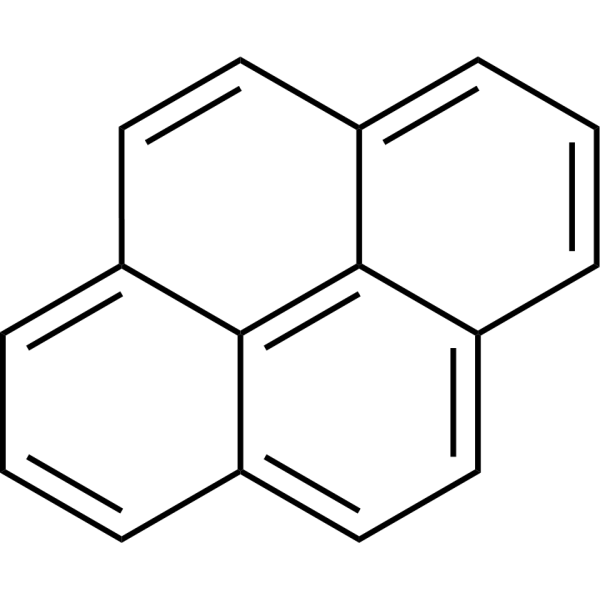
-
- HY-D1606
-
|
|
Adrenergic Receptor
|
Metabolic Disease
|
|
BODIPY FL prazosin is a fluorescent α1-adrenergic antagonist with Ki values of 14.5, 43.3 nM for α1a-AR and α1b-AR, respectively. BODIPY FL prazosin also is a fluorescent ligand with the excitation and emission wavelengths are 485 and 535 nm, respectively. BODIPY FL prazosin can be used for study the differences in the subcellular localization of α1-adrenoceptor subtypes .
|
-
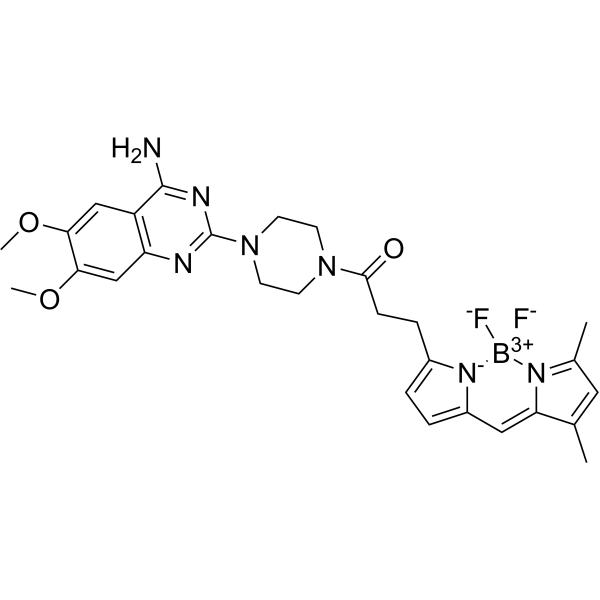
-
-
HY-L903
-
|
|
5196 compounds
|
|
Fragment-based drug discovery (FBDD) is well suited for discovering both drug leads and chemical probes of protein function. 3-dimensionality (3D) diversity is pivotal because the molecular shape is one of the most important factors in molecular recognition by a biomolecule. There is a developing appreciation that 3D fragments could offer opportunities that are not provided by 2D fragments.
MCE 3D Diverse Fragment Library consists of 5,196 non-flat fragment-like molecules (average Fsp3 value 0.58). More than 4,700 fragment compounds contain at least one chiral center in the structure. The key concepts that underlie the library design were 3D shape, structural diversity, reactive functionality and fragment-like. This 3D Diverse Fragment Library brings higher fragment hit optimization and increases the likelihood to find innovative hits in FBDD.
|
-
-
HY-L032
-
|
|
22451 compounds
|
|
Fragment-based drug discovery (FBDD) is well suited for discovering both drug leads and chemical probes of protein function; it can cover broad swaths of chemical space and allows the use of creative chemistry. Fragment-based drug discovery is well-established in industry and has resulted in a variety of drugs entering clinical trials, with two, vemurafenib and venetoclax, already approved. FBDD also has key attractions for academia. Notably, it is able to tackle difficult or novel targets for which no chemical matter may be found in existing HTS collections.
MCE designs a unique collection of 22451 fragment compounds, all of which obey a heuristic rule called the “Rule of Three (RO3) ”, in which molecular weight ≤300 Da, the number of hydrogen bond donors (H-donors) ≤3, the number of hydrogen bond acceptors (H-acceptors) is ≤3 and cLogP is ≤3. This library is an important source of lead-like drugs.
|
| Cat. No. |
Product Name |
Type |
-
- HY-130022
-
|
|
Fluorescent Dyes/Probes
|
|
HKPerox-1 is a highly sensitive green fluorescent probe for the specific detection of H2O2 in living cells with a maximum excitation wavelength and emission wavelength of 520 nm and 543 nm, respectively .
|
-
- HY-103609
-
|
Benzo[def]phenanthrene
|
Dyes
|
|
Pyrene is a polycyclic aromatic hydrocarbon (PAH) composed of four fused benzene rings. It has a distinct aromatic odor, produced by incomplete combustion of organic matter. Pyrene exhibits strong fluorescence, emitting in the blue region of the spectrum, making it useful as a probe for studying molecular interactions in solution and on surfaces. Pyrene is also used as a model compound for the study of PAHs in various environments and biological systems because of its ubiquity in these environments. However, long-term exposure to pyrene has been associated with potential health risks, including carcinogenicity and mutagenicity.
|
-
- HY-D1045A
-
|
DABCYL sodium; Para-methyl red sodium
|
Fluorescent Dyes/Probes
|
|
Dabcyl acid sodium (DABCYL sodium) is a nonfluorescent chromophore and a quencher. Dabcyl acid sodium can be used as molecular beacon nucleic acid probes to recognize and report the presence of specific nucleic acids in homogeneous solutions .
|
-
- HY-D1609
-
|
|
Dyes
|
|
BODIPY FL Verapamil hydrochloride is a fluorescent dye, it can be used as a molecular probe to label tissues and cells. BODIPY FL Verapamil hydrochloride is a substrate for both ABCB1 and ABCC1 .
|
-
- HY-162051
-
|
|
Fluorescent Dyes/Probes
|
|
CYP1B1-IN-6 (compound 19) is a fluorescence molecular probes which inhibits CYP1B1 activity. CYP1B1-IN-6 can identify tumor sites in fluorescence imaging and photoacoustic imaging modes .
|
-
- HY-D1606
-
|
|
Fluorescent Dyes/Probes
|
|
BODIPY FL prazosin is a fluorescent α1-adrenergic antagonist with Ki values of 14.5, 43.3 nM for α1a-AR and α1b-AR, respectively. BODIPY FL prazosin also is a fluorescent ligand with the excitation and emission wavelengths are 485 and 535 nm, respectively. BODIPY FL prazosin can be used for study the differences in the subcellular localization of α1-adrenoceptor subtypes .
|
| Cat. No. |
Product Name |
Type |
-
- HY-W090065
-
|
1-Pyrenemethylamine hydrochloride
|
Biochemical Assay Reagents
|
|
Pyren-1-ylmethanamine hydrochloride, Pyren-1-ylmethanamine hydrochloride is commonly used as a fluorescent probe in biochemistry and molecular biology to detect and study nucleic acids, proteins and other biomolecules, moreover, it has been used in analytical chemistry Among them, for the detection of heavy metals and other pollutants in environmental samples, the pyrene group in the molecule exhibits strong fluorescence properties, which makes it useful as a sensitive and selective detector in various applications.
|
| Cat. No. |
Product Name |
Target |
Research Area |
-
- HY-P4138
-
|
|
Fluorescent Dye
|
Cancer
|
|
Antennapedia Peptide FAM-labeled is a fluorophore labeled peptide. Antennapedia Peptide FAM-labeled also can be used for the research of cancer as a molecular probe .
|
-
- HY-P4479
-
|
|
Peptides
|
Others
|
|
H-Phe-Phe-Phe-OH is an aromatic tripeptide that has the potential to be used as DNA molecular probe .
|
| Cat. No. |
Product Name |
Category |
Target |
Chemical Structure |
| Cat. No. |
Product Name |
Chemical Structure |
-
- HY-Y1309S
-
|
|
|
1-Naphthol-d8 is the deuterium labeled 1-Naphthol[1]. 1-naphthol is an excited state proton transfer (ESPT) fluorescent molecular probe[2].
|
-

| Cat. No. |
Product Name |
|
Classification |
-
- HY-147309
-
|
|
|
Azide
|
|
16-Azidohexadecanoic acid, a synthetic fatty acid, can be used as a modification marker for nucleotides and a molecular probe for fatty acid metabolism . 16-Azidohexadecanoic acid is a click chemistry reagent, itcontains an Azide group and can undergo copper-catalyzed azide-alkyne cycloaddition reaction (CuAAc) with molecules containing Alkyne groups. Strain-promoted alkyne-azide cycloaddition (SPAAC) can also occur with molecules containing DBCO or BCN groups.
|
Your information is safe with us. * Required Fields.
Inquiry Information
- Product Name:
- Cat. No.:
- Quantity:
- MCE Japan Authorized Agent:

































